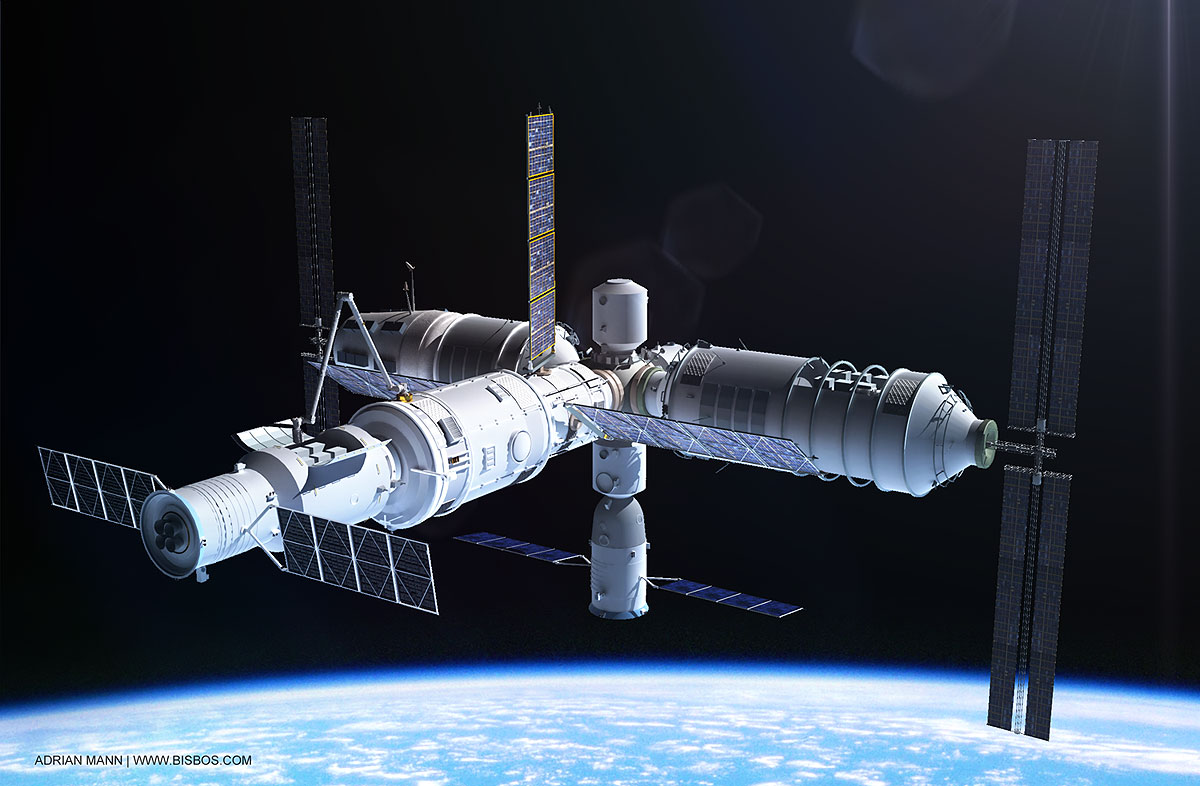


The China Manned Space Agency released several Powerpoint slides showing a closer look at the Tiangong 3, China’s planned space station. Scheduled to be commissioned in 2022, the Tiangong 3 will be regularly visited by Shenzhou manned space vessels, and automated Tianzhou resupply vehicles.


The core 22-ton module, “Tianhe 1”, which can accommodate a crew of three taikonauts for 40 days, will be launched in 2018, with the two attendant science modules to fly into orbit in the following four years. Tianhe 1 will have five access/docking ports, and a robotic arm. Tianhe 1 will contain a laboratory with integrated modular racks for storing scientific equipment and experiments. The Tiangong 3 can undergo future expansion by attaching additional Tianhe core modules.

Both science modules will be around the same size as Tianhe 1, with a mass of 20 tons each. The first science module, Wengtian, comes with another set of internal modular racks for scientific missions. Wengtian will also have its own small robotic arm to assist taikonauts in conducting experiments out in the vacuum of space.

The second science module, Mengtian, is also pressurized, but will have an access/docking port for interfacing with space ships (such as the Tianzhou resupply ships), allowing it to support other modules and spaceships for logistics and repair.

The plans also show how Tiangong 3 won’t be alone in the skies. China’s planned large space telescope, now named Xuntian (“which takes to the heavens”), has a 2-2.4 meter diameter lens, making it large as the Hubble Space Telescope, but has a field of view 300 times larger. Xuntian’s unique feature is a docking port installed at its rear. This would allow for it to be moved (by its maneuvering jets or an orbital tug) close to the Tiangong 3, whereupon the station’s rocket arms can dock it to Mengtian, allowing taikonauts easy access to Xuntian’s interior.

With the impending maiden launch of the heavy Long March 5 rocket this year, Tiangong 3 will finally have a powerful enough rocket to boost its components into orbit. As China looks to land a man on the Moon in the 2030s, launch a Mars rover, and fly the super heavy Long March 9 rocket, Tiangong 3 is only the first is a series of China’s steps to becoming a space superpower.
You may also be interested in:
China Aims for Humanity’s Return to the Moon in the 2030s
Watch Out SpaceX: China’s Space Start Up Industry Takes Flight
China’s Answer to the Hubble Telescope
China Showcases Plan to the Become the Leading Space Power
China to Launch Powerful Civilian Hyperspectral Satellite
What Will the Next Chinese Spaceship Look Like?
China’s Space Station Gets a “Super Eye”
China’s Long March 5 Rocket Stretches Its Legs
